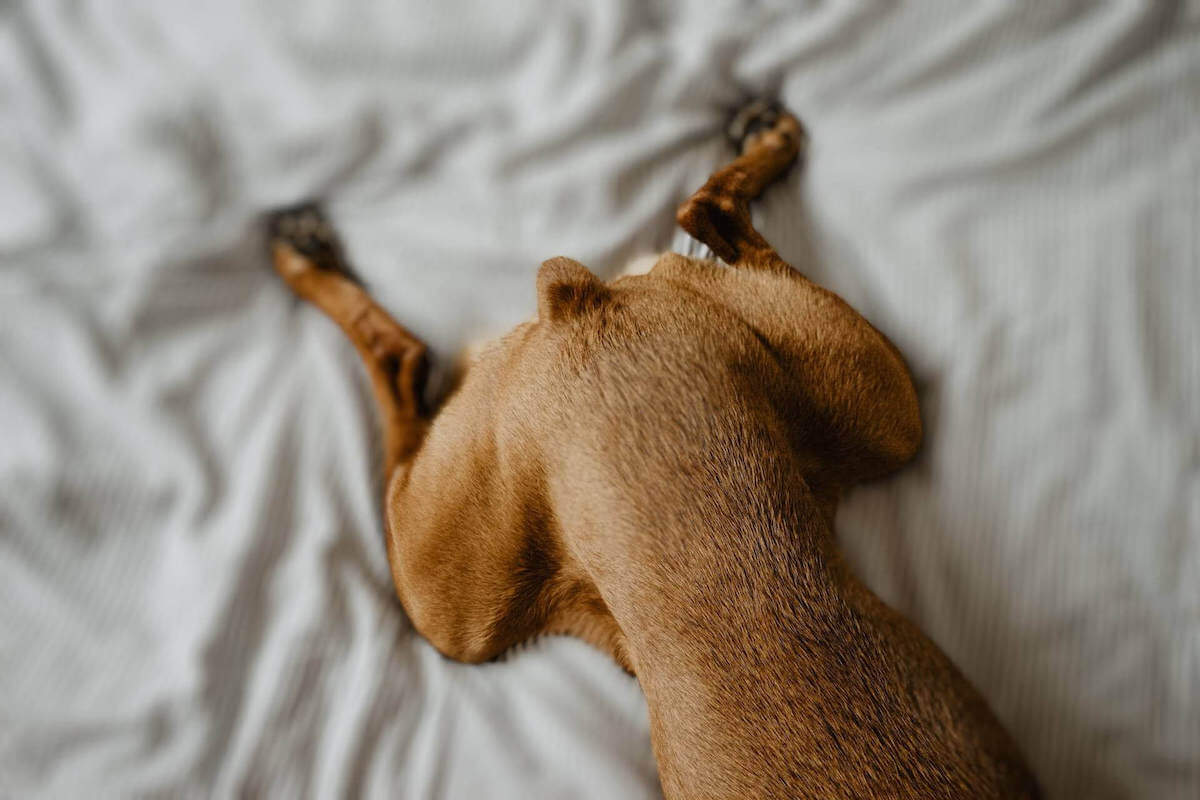Have you ever walked in on your dog humping a blanket and wondered why they do it?
Dogs hump things, even after they’ve been spayed or neutered. For some pet owners, this can be awkward or confusing.
That’s especially true when your dog continues to hump things, even when you’ve attempted to redirect their behavior.
In this article, we will delve into the reasons why your dog humps blankets and what you can do about it.
From understanding the underlying causes to providing the proper training and support, you’ll learn how to manage this unwanted behavior.

Why Does My Dog Hump Blankets? (8 Reasons Explained)
Understanding why your dog is humping blankets can help you figure out a way to stop it. In some cases, specific interventions are needed to deal with certain causes of excessive humping.
The following are eight reasons why dogs hump blankets.
1. Your dog is humping blankets for sexual stimulation
Sometimes, the simplest reason is the right one. While dog humping doesn’t necessarily mean your dog is aroused, sometimes that is the case. When dogs are aroused, they’ll often hump whatever is nearby to relieve their arousal.
Although most people associate humping with male dogs, female dogs may also hump blankets. If your female dog is humping blankets, it may be a sign that she’s in heat. This may be a sign that it’s time to get her spayed.
However, spaying and neutering your dogs won’t get rid of hormonal behavior entirely. Although their hormones will be significantly lower and they’ll be incapable of reproducing, some dogs learn that sexual stimulation feels good.
Because of this, they may continue humping blankets and other objects for stimulation.
2. Your dog is overexcited
Sometimes strong emotion is at the root of your dog’s humping behavior. If you notice your dog only humps his blankets when he’s excited, the excitement might be the cause of this behavior.
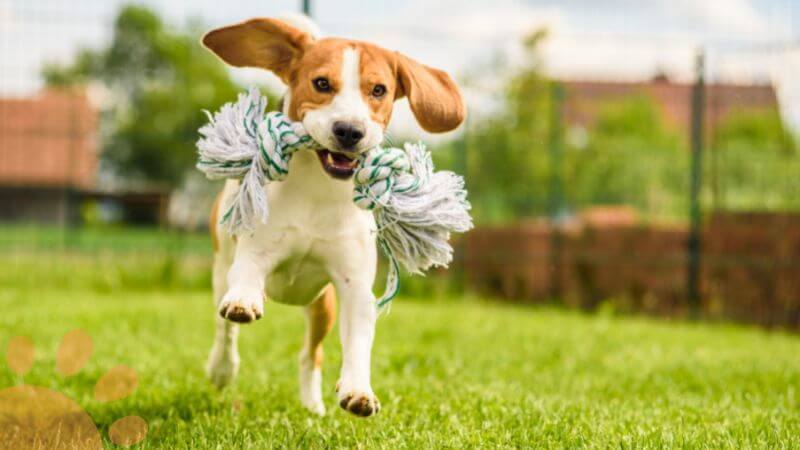
For example, your dog might hump the blankets after you tell him you’re going to go for a walk.
If excitement is the reason behind your dog’s humping, it will usually be clear based on the events surrounding the incident.
Take note of when your dog is humping blankets. If it only occurs around exciting household events (playtime, food, guests), then overexcitement might be the cause of his behavior.
3. Your dog might be stressed
Good excitement isn’t the only thing that can cause your dog to hump his blankets. Sometimes stress can cause your dog to act out by humping blankets.
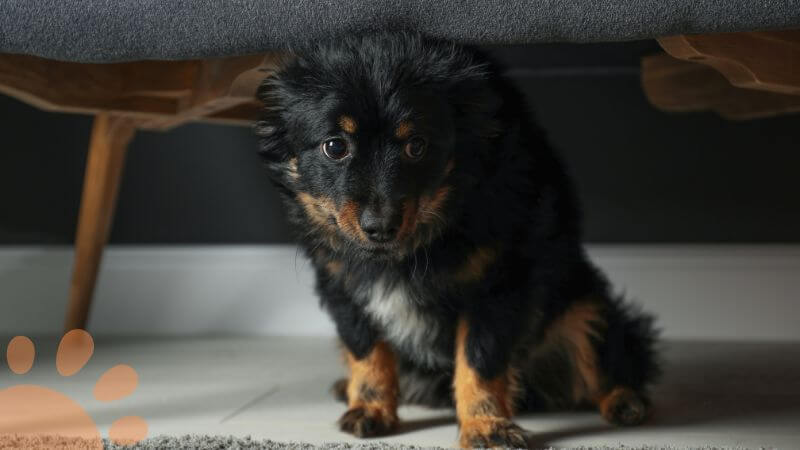
As stress hormones flood their bodies, they might try to relieve that stress by humping the nearest object.
Sometimes, your dog may be trying to communicate his distress through this behavior. If you notice him humping blankets only when bad things are happening, stress may be the cause of the behavior. For example, your dog might hump blankets when he hears loud noises outside.
4. Your dog is bored
Strong emotions aren’t the only reason your dog might start humping things. Sometimes, the absence of stimulation will cause your dog to find stimulation. In some cases, that means humping things to entertain herself.
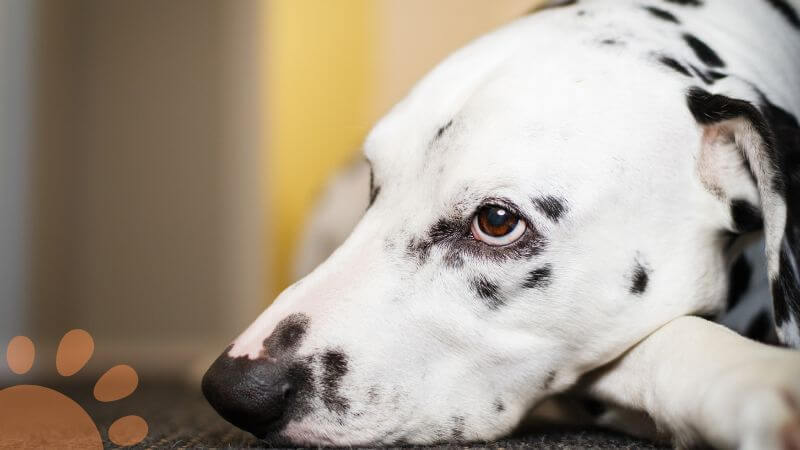
As playful and social animals, dogs don’t like to be in small spaces without enough activity to keep their bright minds busy.
While some dogs might become aggressive or destructive while bored, others will turn to humping to alleviate the stress of boredom.
If boredom is the cause of your dog’s blanket-humping habit, it may be harder to figure out. Your dog may not show this behavior except when you’re away from home.
However, you may notice your dog humping blankets when she’s being otherwise ignored. This may be a sign that boredom is the root of this behavior.
5. Your dog needs to pee or poop
Sometimes dogs hump blankets to communicate their need to use the bathroom. While most dogs will be trained to signal their need to go to their owners, sometimes the urge will cause them to act out to relieve the pressure that comes from having to go pee or poop.
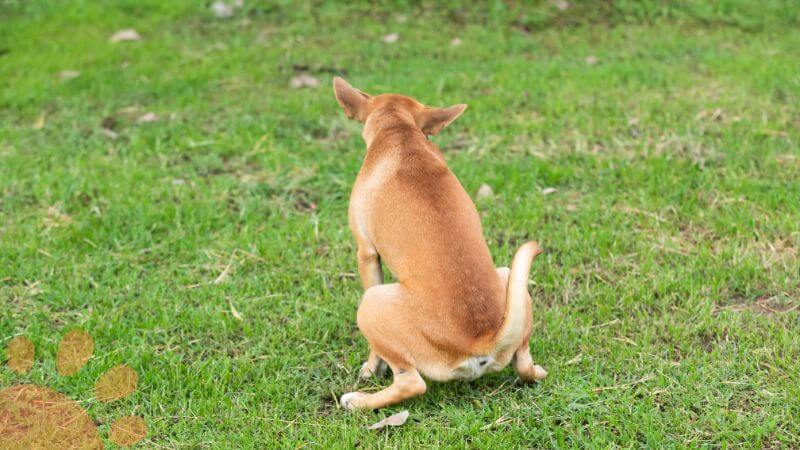
If your dog only humps blankets right before being let out to do his business, this may be the cause of the behavior.
Ensure you’re letting him outside to relieve himself as soon as he indicates the need; this behavior may decrease or disappear entirely.
6. Your dog learned it from other dogs
Sometimes, dogs do things because they see other dogs do it first. They could have noticed other dogs humping blankets and tried it for themselves.
Since early socialization plays a big role in their future behavior, their early learning may form habits they continue later in life.
It’s important for pet parents to correct this behavior as early as possible. When left unchecked, it can become an excessive or compulsive behavior.
Changing your dog’s habits only grows more difficult as your dog gets older and more set in his ways.
7. Your dog is expressing dominance
Humping is one of the ways dogs show everyone else who is in charge. If your dog is humping blankets, it might be his way of communicating that the space he’s in is his territory.
This can happen when you introduce a new dog, pet, or child into the home. Your dog may act out to let everyone know he’s still in charge of your home.
While this behavior should lessen over time, it can turn into a compulsive behavior (which is harder to redirect).
8. Your dog has an underlying medical condition
Certain illnesses and medical conditions can drive your dog to hump objects, including blankets.
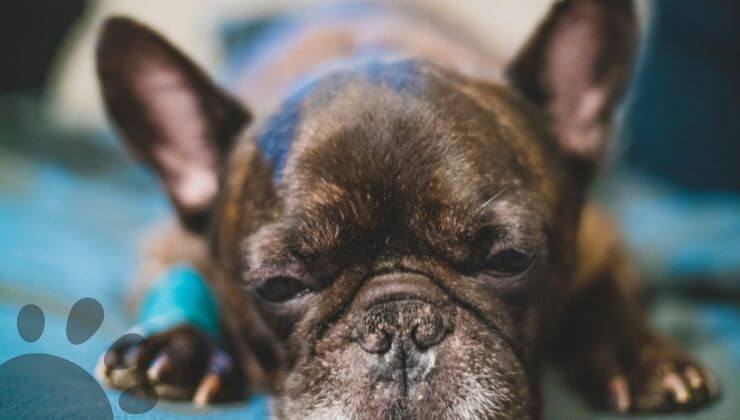
Urinary tract infections (UTIs) commonly cause this behavior since your dog’s discomfort in the area may drive him to do anything he can to relieve the pressure.
Other conditions, such as allergies or skin conditions, may also cause your dog to hump his blankets. If your dog has recently started humping his blankets, it might be time to take him to the vet for a checkup.
Sometimes your dog’s humping behavior might also be accompanied by genital licking or scratching against the blanket. In that case, it’s extra important to make a trip to see his veterinarian.

Should I Let My Dog Hump Blankets?
Humping is not always a sign of sexual behavior in dogs. It can also indicate that your dog is excited or happy.
It is not harmful to dogs to hump blankets, but it can be a nuisance for some dog owners and can indicate an underlying behavioral issue.
If your dog is humping blankets excessively or it is causing a problem, it may be best to consult a veterinarian or a professional dog trainer for guidance on how to address the behavior.

How Can You Stop Your Dog From Humping Blankets?
Now that you have a good understanding of why your dog might be humping blankets, you’re ready to learn some strategies to help you redirect this behavior.
The following are five ways to stop your dog from humping blankets.
1. Get your dog spayed or neutered
Spaying and neutering aren’t just important for your dog’s health but to prevent unwanted behaviors.
If you haven’t made an appointment to get your dog fixed, make sure to do so as soon as your dog has reached sexual maturity.
Once your dog is spayed or neutered, the behavior should decrease drastically. It may even stop altogether!
2. Have your dog evaluated by a veterinarian to rule out medical causes
Since medical conditions can cause your dog to hump blankets, it’s important to mention the behavior to your dog’s vet.
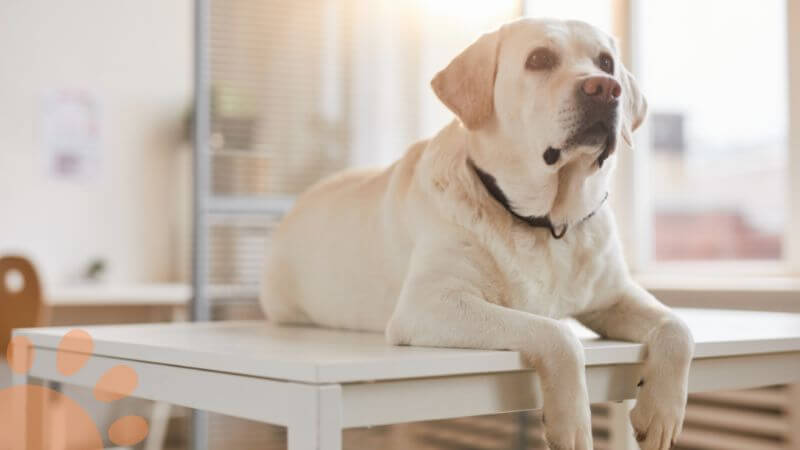
In some cases, treating a UTI or other condition will be the key to getting your dog to stop this unwanted behavior.
At the very least, this will help you rule out medical causes, allowing you to focus on behavioral causes for your dog’s behavior.
3. Train your dog with commands such as “Leave it”
If you want to stop this behavior when it happens, make sure to teach your dog commands such as “Leave it.”
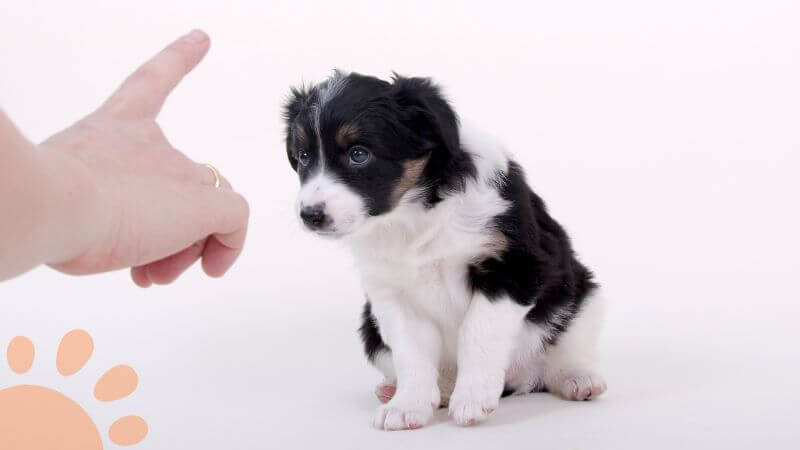
You can use these commands to interrupt and redirect the behavior at the moment. This is a particularly helpful tool if your dog is humping blankets because of a learned, compulsive behavior.
4. Make sure your dog is getting enough exercise and enrichment
Your dog could be humping blankets out of boredom. If this is the case, make changes to your daily routine to help keep your dog stimulated.
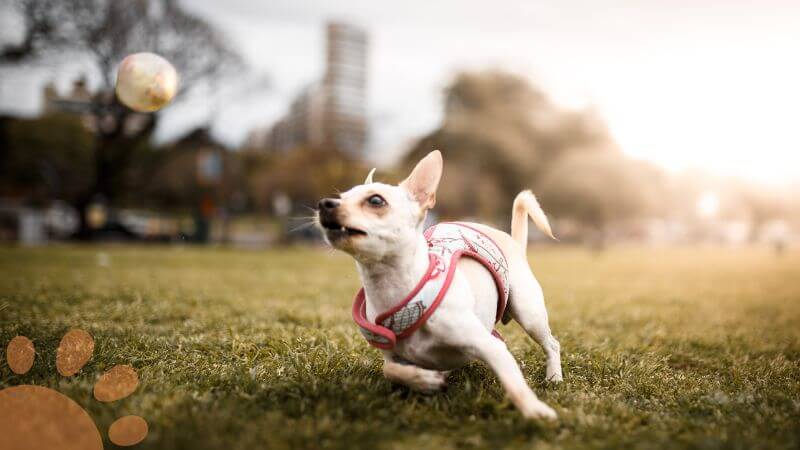
Increase the time you spend walking and playing with your dog. When he’s able to expend his energy, he’s less likely to engage in unwanted behaviors.
If you need to leave your dog at home during the workday, ensure he has plenty of things to keep him busy. Give him toys and other enrichment activities to keep him entertained for the long hours apart.
5. Let your dog hump away
Sometimes, the best solution is to allow your dog to hump blankets. While you obviously don’t want him to hump blankets the family curls up in, you might just let him hump the blankets in his own sleeping area.
As long as you’ve ruled out any medical causes or emotional distress, letting your dog hump blankets might be the best option.
However, it might still be worth teaching your dog the “leave it” command to redirect the behavior when you have guests in your home.

Wrap-Up: Dog Humping Blankets
In conclusion, humping is a normal behavior for dogs, but it can be caused by various factors such as sexual behavior, dominance, or anxiety.
If your dog is humping blankets excessively, it may indicate an underlying issue. It’s important to consult with a veterinarian to rule out any underlying medical issues and to work with a professional trainer to address any behavioral issues.
In many cases, providing your dog with plenty of exercises, mental stimulation, and positive reinforcement can help reduce humping behaviors.
It’s also important to remember not to punish your dog for humping blankets but rather to redirect this behavior toward other activities.
